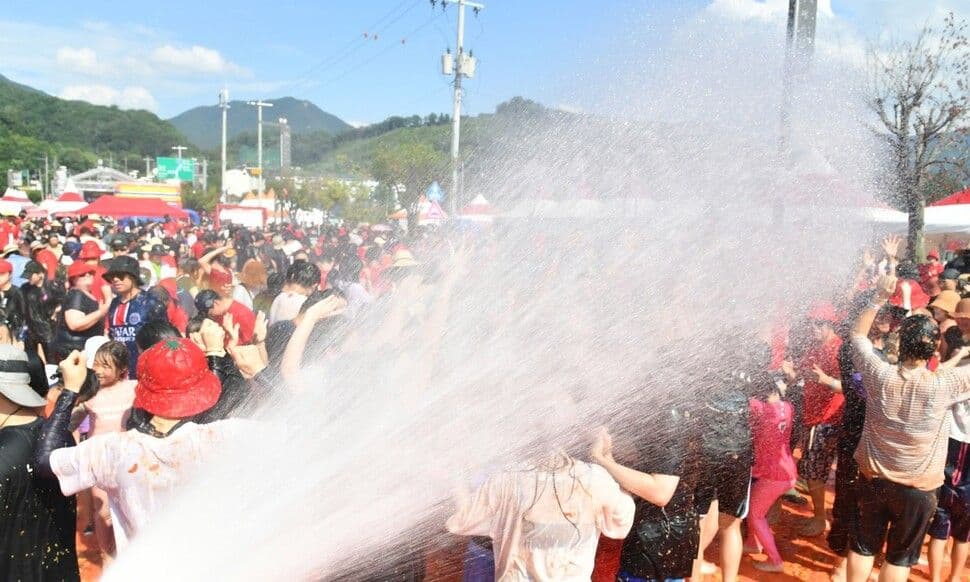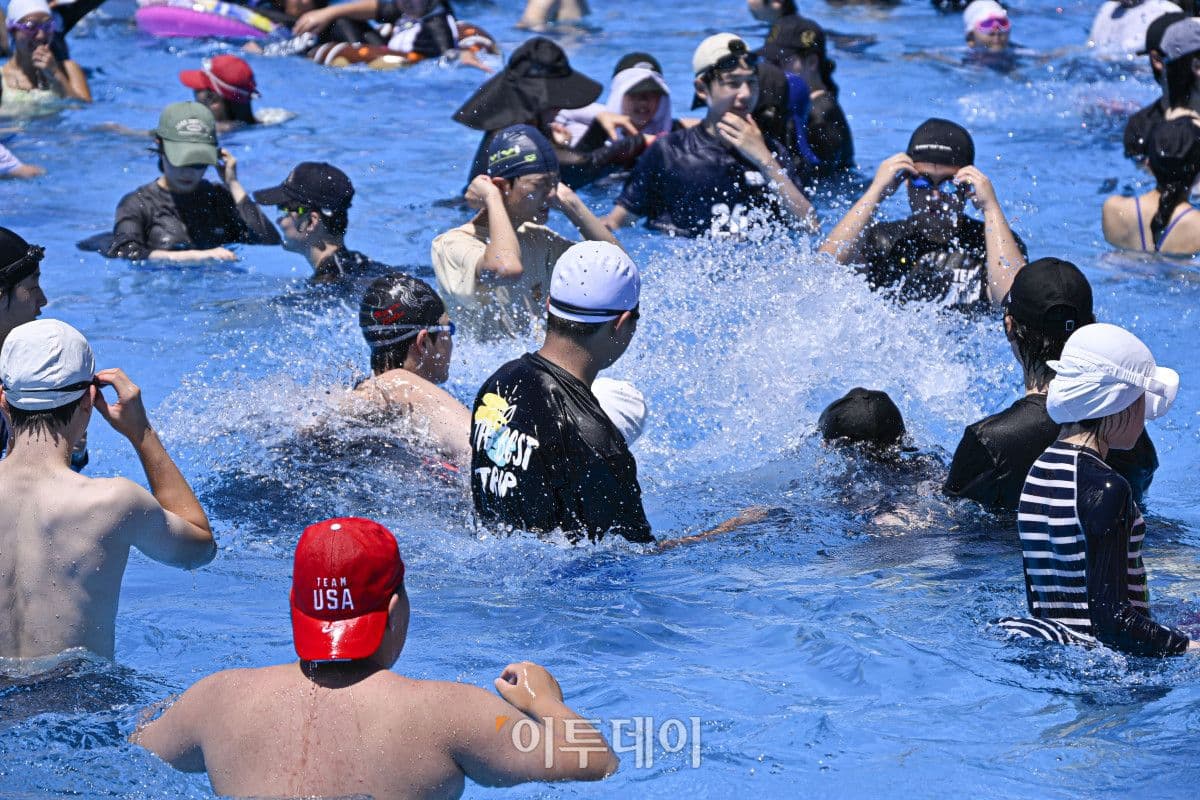Korea's Summer Climate Puzzle: Heatwaves, Deluges, and the Art of Prediction
Unravel Korea's complex summer weather. Dive into the science behind heatwaves and sudden storms, learn practical adaptation tips, and understand what drives its unique unpredictability.
The Unyielding Embrace of Summer Heat: Persistent Swelter and Tropical Nights
Summer in often arrives with an unyielding embrace of heat, transforming daily life into a constant quest for coolness. For weeks on end, the mercury stubbornly climbs, with the frequently issuing heatwave warnings across most regions. This isn't just about high daytime temperatures; it's the insidious 'tropical nights' (열대야) that truly wear people down, where temperatures refuse to drop below 25 degrees Celsius even after sunset, making restful sleep a distant dream. Forecasts frequently predict peak 'sensory temperatures' soaring around 33 degrees Celsius, with actual highs ranging from 31 to 34 degrees, often exceeding the usual seasonal averages of 29-33 degrees. Some inland cities, like and , can even hit a scorching 35 to 37 degrees. This persistent swelter, a hallmark of Korea's summer, demands constant vigilance for health, urging residents to adapt their routines to avoid heatstroke and exhaustion. It’s a season where the air itself feels thick, heavy with humidity, setting the stage for the dramatic shifts yet to come.
Decoding the Sky's Fury: Sudden Downpours and Flash Rain
Just when the oppressive heat seems to dominate the narrative, Korea's summer skies often unleash their other extreme: sudden, furious downpours. These aren't your gentle, prolonged drizzles; we're talking about 'flash rain' (소나기) and intense deluges that can appear with little warning, turning dry streets into gushing rivers in minutes. While some inland areas might experience scattered showers bringing a modest 5 to 40 millimeters, the true concern lies in the potential for torrential rainfall. Forecasts frequently warn of significant precipitation, with some regions expecting over 120 millimeters, and hourly rates potentially hitting a staggering 30 to 50 millimeters. This level of rain in such short bursts dramatically elevates the risk of flash floods and urban inundation, posing serious threats to infrastructure and personal safety. Adding to the peril, coastal areas, particularly along the , , and , must contend with potential rogue waves, unpredictable surges that can sweep unsuspecting individuals out to sea. This dual nature of Korea's summer weather keeps everyone on edge, a volatile dance between scorching sun and sudden, overwhelming floods.
Behind the Forecast: Atmospheric Dynamics Shaping Korea's Summer
Understanding Korea's paradoxical summer requires a look at the complex atmospheric dynamics at play. The dominant force is often the shifting edge of the , a vast, warm, and humid air mass that typically extends its influence over the Korean Peninsula during summer. Its strength and precise positioning dictate the severity and duration of heatwaves and tropical nights. However, this high-pressure system isn't the only player. , ranging from distant depressions to full-blown typhoons, frequently interact with the North Pacific High. Their proximity and movement can dramatically alter weather patterns, either enhancing the heat by drawing in more humid air or, conversely, bringing widespread, heavy rainfall as they pass. This intricate interplay between a dominant high-pressure system and transient tropical elements creates an inherently unstable weather environment. Predicting the exact timing, location, and intensity of these extreme events becomes a formidable challenge for forecasters, as even slight shifts in these large-scale atmospheric patterns can lead to vastly different local outcomes, making constant monitoring crucial.
Navigating the Extremes: Practical Resilience for a Dynamic Season
Given the volatile nature of Korea's summer, practical resilience becomes key for individuals and communities alike. For the relentless heat, health management is paramount. This means staying hydrated, avoiding outdoor activities during peak heat hours, and creating cool environments to mitigate the effects of tropical nights. Public spaces offering air-conditioned relief are often vital havens. When the skies open up, a different set of precautions kicks in. Staying informed through the latest weather forecasts is not just recommended; it's essential. With the potential for rapid onset floods, residents should avoid low-lying areas, underpasses, and flooded roads. Coastal dwellers and visitors, in particular, must heed warnings about high waves and the unpredictable nature of rogue swells. Preparing emergency kits, securing outdoor belongings, and having evacuation plans in place can make a significant difference. Adapting to these extremes isn't about fighting the weather, but rather about understanding its patterns and equipping ourselves with the knowledge and tools to stay safe and minimize disruption.
Beyond the Daily Outlook: What Korea's Shifting Summers Mean for the Future
Looking beyond the immediate daily forecast, Korea's increasingly extreme summers offer a glimpse into a changing climate and its profound implications for the future. The persistent heatwaves, often surpassing historical averages, coupled with more frequent and intense localized downpours, align with global patterns of climate change. This isn't merely an inconvenience; it represents a growing challenge for public health, agriculture, urban infrastructure, and water management. Cities, designed for more predictable weather, face new pressures from urban heat islands and flash flooding. Farmers grapple with crop damage from both drought and deluge. For weather prediction agencies, the stakes are higher than ever, demanding continuous advancements in modeling and real-time monitoring to provide accurate, actionable warnings. As these seasonal shifts become the new normal, Korea must invest in long-term adaptation strategies, from resilient urban planning and green infrastructure to improved early warning systems and public education campaigns, ensuring a more prepared and sustainable future for its dynamic summers.
Related Articles

Decoding the Dual Extremes: Korea's Summer of Sweat and Storms

Decoding the Dual Extremes: Korea's Summer of Sweat and Storms

The Unyielding Embrace: How Korea's Historic Heatwave Reshapes Everyday Life

The Unyielding Embrace: How Korea's Historic Heatwave Reshapes Everyday Life

Summer's Shifting Palette: Navigating Korea's Diverse Daily Weather

Summer's Shifting Palette: Navigating Korea's Diverse Daily Weather

Weather Whiplash: Navigating Korea's Shifting Summer Skies
